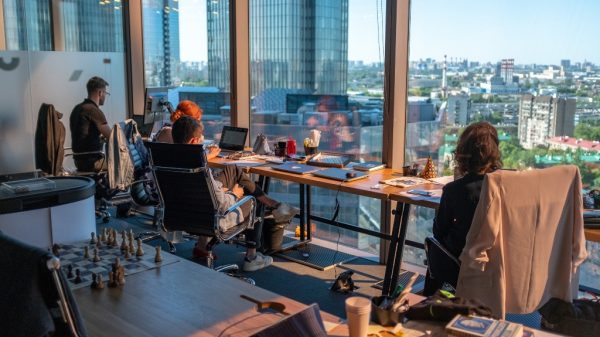It’s no secret that the Covid-19 pandemic sent the workforce into a tailspin. Many companies, including large corporations, shifted to remote work. Tens of thousands of people were laid off, relying on government aid as we saw a widespread hiring freeze. As government benefits wrapped up, folks started picking up the pace on job hunting. Even now that the U.S. is back to business as usual, employers may find it difficult to recruit new talent. It’s still a workers’ labor market.
Chances are you’ve visited businesses where things were not running smoothly due to staffing issues. Maybe your favorite diner took longer to bring your food out or it could be that your home internet installation appointment was scheduled several days out. Why is it that we’re still seeing understaffed businesses, even after things have opened back up? Why is it that we’re still seeing so many issues with a labor shortage, even though the U.S. has opened back up?
To answer this question, we have to consider the pandemic itself. Our country tragically lost 1.1 million lives due to Covid-19. It’s estimated that 35% of those people, or about 400,000, were part of the workforce. That’s not exactly a modest number. Although the death rate has decreased, we’re still seeing extended leave due to the spread of the Covid-19 virus, causing an additional and on-going strain. Time taken for sick leave has doubled compared to previous standards.
For others, the pandemic provided a launchpad into an earlier-than-planned retirement. Since Covid-19 was especially concerning for those of advanced age, some folks made the decision to wrap up their careers, opting to retire and possibly protect themselves from daily exposure. Another factor to consider is the travel bans and tightened guidelines during the peak of the pandemic. America welcomes up to 675,000 permanent immigrant visas each year, but the pandemic led to a steep drop in the amount of folks willing or able to leave their native countries.
Even so, the U.S. labor force currently sits around 165 million people, which matches the pre-pandemic number. So why are we still facing a labor shortage? Even after factoring in travel bans, deaths, and a decline in the number of immigrants, the U.S. population has still grown since early 2020. When you adjust the figures to consider growth, we sit at a 1% drop in labor participation rate due to population growth, putting us around 3 million people short.
If you’re a hiring manager or recruiter and find it difficult to find new talent, you’re not alone. A whopping 90% of employers have reported finding no to very few qualified applicants to fill vacant positions. The Bureau Of Labor Statistics reports 10.5 million open positions, which is 38% higher than the pre-pandemic record of 7.6 million. So while you wait a few extra minutes for your morning coffee, take a deep breath and remember we’re all doing the best we can.
Jennifer is a native Houstonian (go Astros!) with a knack for creating digital works of art. She has expansive experience creating content and branded collateral for Fortune 500 companies, as well as small local businesses. When she’s not buried in her laptop, Jennifer is the marketing director for a world championship circuit barbecue cook off team and pet mom to dog (Milo) and Guinea pig (Piggy Smalls).












































